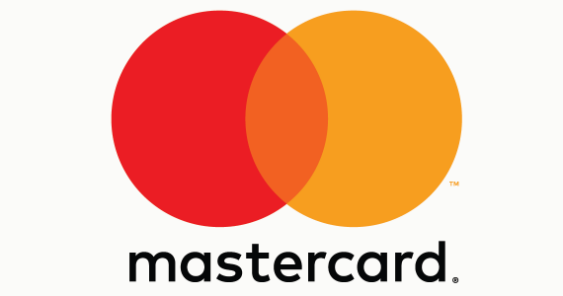SINGAPORE – Across Asia Pacific, overall consumer confidence stays buoyed in optimistic territory at 66.9 points, a slight improvement from 62.7 points six months ago, according to the Mastercard Index of Consumer Confidence released today. The 4.2 point increase in confidence was driven mainly by a bullish outlook on the Stock Market (+7.3) and Employment (+5.1). Consumer sentiment remains stable in 11 out of the 18 Asia Pacific markets (within +/- 5 points from the last survey). The Index and its accompanying reports should not be interpreted as indicators of Mastercard’s financial performance.
Boosted by heightened expectations in its economic performance, South Korea has recorded the largest improvement in consumer confidence in Asia Pacific. Optimism in South Korea at its highest level since 1995, and the market’s meteoric leap in sentiment has propelled it from pessimistic territory to very optimistic territory over the last six months. Likewise, Singapore and Malaysia also saw significant leaps in confidence.
Meanwhile, India continues to stay in very optimistic territory at 86.0 points, despite posting the region’s largest decline of 9.3 points. Consumer sentiment also saw a slight deterioration of 6 points in Myanmar. According to the Index, pessimism towards Quality of Life was the key driver of decline for both India and Myanmar.
Between April and June 2017, 9153 respondents, aged 18 to 64 in 18 Asia Pacific markets, were asked to give a six-month outlook on five economic factors, namely, the Economy, Employment prospects, Regular Income prospects, Stock Market and Quality of Life. The Index is calculated on a scale of 0 to 100, with zero as the most pessimistic, 100 as the most optimistic and between 40 and 60 as neutral.
Additional country-level detail
- Cambodia (93.1) leads the region as the most optimistic market, with Vietnam (90.8), Bangladesh (89.4), Philippines (88.8), and China (88.2) rounding off the top five.
- South Korea (78.0), which experienced a small improvement in consumer confidence in the previous survey, recorded the largest increase in the region compared to the last survey six months ago with significant improvement across all five components – Employment (+47.2), Economy (+59.0), Regular Income (+24.0), Stock Market (+54.2) and Quality of Life (+49.4).
- Singapore (45.4, +15.4) and Malaysia (42.3, +11.1) moved from pessimistic into neutral territory, with significant improvements of more than 10 points. Both markets saw more than 15 point improvements in the Stock Market component.
- China (88.2, +7.4) and Bangladesh (89.4, +6.6) moved further into very optimistic territory, with some improvement in all five components, particularly Employment (+12.1) for China and Stock Market (+15.0) for Bangladesh.
- India (86.0, -9.3) has shown the largest deterioration in confidence levels in the region, but still remains in very optimistic territory. While all five components saw declines, consumer outlook on the Economy (-11.0) and Quality of Life (-11.6) registered particularly large drops.
- Indonesia stays in optimistic territory, with an increase of 4.0 points to 74.8 points driven by a large bump (+16.8) in the Employment component.
- Philippines (88.8, -2.7) and Myanmar (86.8, -6.0) saw a slight deterioration in confidence levels, but remain in very optimistic territory.
- Thailand (63.9, -4.4) and New Zealand (60.5, -1.7) remain in optimistic territory, despite observing declines in all of the components, barring Regular Income.
- Australia (49.2, +2.7), Hong Kong (47.0, +4.8) and Japan (44.4, +1.4) posted slight increases, remaining in neutral territory. Hong Kong and Japan observed slight deterioration in the Regular Income component (-5.8 and -8.9, respectively), while Australia recorded an increase in all five components.
- Taiwan (38.3, +4.1) and Sri Lanka, (38.2, -2.0), the lowest ranked in the region, saw slight movements in overall consumer confidence, remaining in pessimistic territory.
Mastercard Index of Consumer Confidence Data – H1 2017
H1 2017 Current Status Sponsor | Change from last half | |||
Asia Pacific | 66.9 | Optimistic | 4.2 | Stable + |
Korea | 78.0 | Very Optimistic | 46.7 | Extreme Improvement |
Singapore | 45.4 | Neutral – | 15.4 | Significant Improvement |
Malaysia | 42.3 | Neutral – | 11.1 | Significant Improvement |
China | 88.2 | Very Optimistic | 7.4 | Some Improvement |
Bangladesh | 89.4 | Very Optimistic | 6.6 | Some Improvement |
Hong Kong | 47.0 | Neutral – | 4.8 | Stable + |
Taiwan | 38.3 | Pessimistic | 4.1 | Stable + |
Indonesia | 74.8 | Optimistic | 4.0 | Stable + |
Australia | 49.2 | Neutral – | 2.7 | Stable + |
Japan | 44.4 | Neutral – | 1.4 | Stable + |
Cambodia | 93.1 | Extremely Optimistic | -0.7 | Stable – |
Vietnam | 90.8 | Extremely Optimistic | -1.5 | Stable – |
New Zealand | 60.5 | Optimistic | -1.7 | Stable – |
Sri Lanka | 38.2 | Pessimistic | -2.0 | Stable – |
Philippines | 88.8 | Very Optimistic | -2.7 | Stable – |
Thailand | 63.9 | Optimistic | -4.4 | Stable – |
Myanmar | 86.8 | Very Optimistic | -6.0 | Some Deterioration |
India | 86.0 | Very Optimistic | -9.3 | Some Deterioration |
Index Score Current Status | Change in Index Points from last half | |||||
Lower Range | Upper Range | Qualitative Statement | Lower Range | Upper Range | Qualitative Statement | |
0 | 10 | Extremely Pessimistic | -100 | -20 | Extreme Deterioration | |
10 | 25 | Very Pessimistic | -20 | -10 | Significant Deterioration | |
25 | 40 | Pessimistic | -10 | -5 | Some Deterioration | |
40 | 50 | Neutral – | -5 | 0 | Stable – | |
50 | 60 | Neutral + | 0 | 5 | Stable + | |
60 | 75 | Optimistic | 5 | 10 | Some Improvement | |
75 | 90 | Very Optimistic | 10 | 20 | Significant Improvement | |
90 | 100 | Extremely Optimistic | 20 | 100 | Extreme Improvement | |
Methodology
Respondents were asked five questions pertaining to their six-month outlook on the economy, their employment prospects, the local stock market, their regular income prospects, and their quality of life. The results of their responses were converted in five component indexes which were subsequently averaged to form the Mastercard Index of Consumer Confidence (MICC) score. The MICC Index score and the 5 component index scores range from 0 – 100 where 0 represents maximum pessimism, 100 represents maximum optimism and 50 represents neutrality.
About the Mastercard Index™ of Consumer Confidence
The Mastercard Index™ of Consumer Confidence survey has an over 20-year track record of consumer confidence indices collected from over 200,000 interviews, unequalled both in scope and history across Asia Pacific.
It is the most comprehensive and longest running survey of its kind in the region. In June 1997, the Index revealed a decline in consumer confidence – one month prior to the devaluation of the Thai baht that triggered the regional economic crisis. In June 2003, the Index score for Employment in Hong Kong dropped to a low score of 20.0. This was subsequently reflected in Hong Kong’s unemployment rate, which peaked just before September 2003 at eight percent.
The survey began in the first half of 1993 and has been conducted twice yearly since. 18 Asia Pacific markets now participate in the survey: Australia, Bangladesh, Cambodia, China, Hong Kong, India, Indonesia, Japan, Malaysia, Myanmar, New Zealand, Philippines, Singapore, South Korea, Sri Lanka, Taiwan, Thailand and Vietnam.








